Remodelación Estadio Santiago Bernabéu

| Category | Sport and Recreation |
|---|---|
| Year | 2021 |
| Country | Spain |
| Organization | FCC Construcción |
| Author | FCC Construcción |
| Co-authors | Horta Coslada Construcciones Metálicas, Inbersa Estructuras Metálicas, Fhecor Ingenieros Consultores |
| Client | Real Madrid Club de Fútbol |
| Place of construction | Madrid |
| Tags |
Estructura metálica de la Reforma del Estadio Santiago Bernabéu
La nueva estructura de cubierta fija, de más de 9.000 toneladas de acero, está formada por dos cerchas atirantadas este-oeste de 177 metros y cuatro transversales de 144 metros. Sobre las trasversales interiores de rodadura se desliza la cubierta retráctil, dividida en dos paneles formados por 5 cojines inflables de 72 por 7 metros entre 6 cerchas híbridas acero-composite de 72.5 metros de luz. En sus extremos se encuentran bogies motorizados que realizan la traslación e integra el mecanismo de elevación.
Las cerchas principales, que durante el montaje son la guía del resto, transfieren la carga vertical a dos nuevas torres de evacuación en el Oeste y a dos péndulos articulados integrados en el Edificio Este, que a su vez recoge esfuerzos horizontales junto a las torres, con total independencia de la estructura existente.
La remodelación del estadio incluye la instalación de un videomarcador o halo perimetral, con una estructura metálica que cuelga de la cubierta fija y está compuesta por una serie de pórticos arriostrados longitudinalmente y dividida en nueve niveles.
La Corona oeste es una celosía de gran canto (16.5 metros), que a su vez constituye el dintel del mega-pórtico formado por ella misma y las dos torres. Su misión es la de dar soporte al skywalk superior y permitir el cuelgue la Viga museo, una megacelosía que soporta cuatro niveles entre torres y a la que se accede desde el estadio a través de forjados basculantes.
El edificio Este consta de 11 plantas formadas por 21 pórticos radiales al estadio existente, con dos pilares, nudos rígidos, correas transversales y forjado de chapa colaborante. En los extremos se rigidiza el edificio con núcleos de hormigón donde se albergan ascensores y escaleras de evacuación. En la zona superior se encuentra una corona en celosía espacial, que enlaza con la oeste a través de las ménsulas de las cerchas de fondo de la cubierta fija, permitiendo circulación completa alrededor del estadio.
La forma de la nueva fachada exterior se obtiene a partir del barrido de tres líneas curvas que definen las cuatro áreas principales de la fachada. Entre la fachada superior e intermedia hay una grieta que la independiza del resto de partes. Esta fachada intermedia de lamas de acero inoxidable se soporta con una estructura de costillas huecas de acero en los ejes del estadio y cuelga de la nueva cubierta fija, apoyando horizontalmente en las costillas de hormigón existente.
Steel structure of the Santiago Bernabeu Stadium refurbishment.
The new fixed roof structure, made of more than 9,000 tons of steel, consists of two 177 meters east-west trusses and four 144 meters cross trusses. The retractable roof slides on the inner cross trusses, divided into two panels consisting of five 72×7 meters inflatable cushions between six 72.5 meters-span steel-composite hybrid trusses. At the ends are motorized bogies that carry out the translation and integrate the lifting mechanism.
The main trusses, which during assembly are the guide for the rest, transfer the vertical load to two new evacuation towers in the west and to two articulated pendulums integrated in the east building, which in turn take horizontal loads next to the towers, completely independent of the existing structure.
The redevelopment of the stadium includes the installation of a video scoreboard or perimeter halo, with a metal structure hanging from the roof and composed of a series of longitudinally braced frames divided into nine levels.
The Crown is a 16.5 meters high latticework, which in turn forms the lintel of the mega-portico formed by itself and the two towers. Its mission is to support the skywalk and to allow the hanging the Museum Beam, a mega truss that supports four levels between towers and which is accessed from the stadium by means of tilting slabs.
The East Building consists of 11 floors formed by 21 radial frames to the existing stadium, with two pillars, rigid nodes, transversal purlins and a steel deck. At the ends, the building is stiffened with concrete cores that house lifts and evacuation staircases. In the upper zone there is a spatial lattice crown, which is linked to the west through the corbels of the trusses at the bottom of the fixed roof, allowing complete circulation around the stadium.
The shape of the new exterior façade is obtained from the sweep of three curved lines that define the four main areas of the façade. Between the upper and intermediate façade there is a crack that makes it independent from the rest of the parts. This intermediate façade of stainless steel slats is supported by a structure of hollow steel ribs on the stadium axes and hangs from the new fixed roof, resting horizontally on the existing concrete ribs.

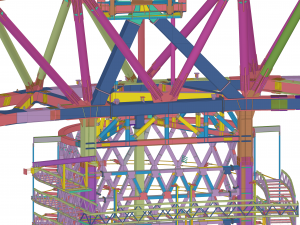
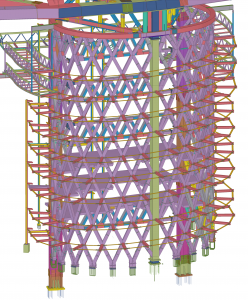


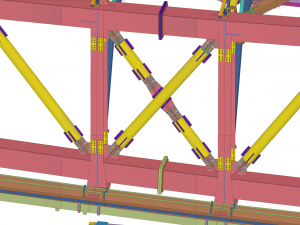

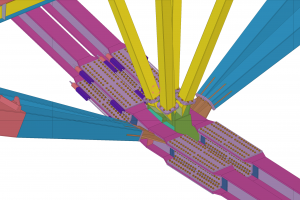

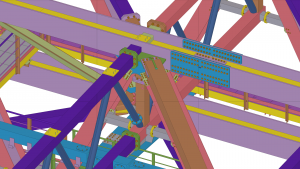
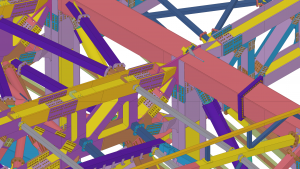


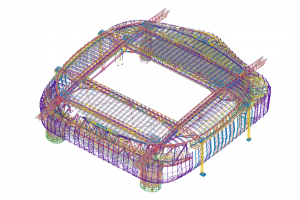

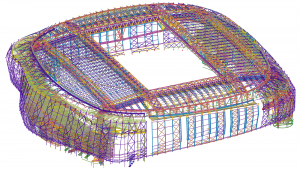
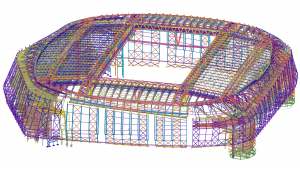
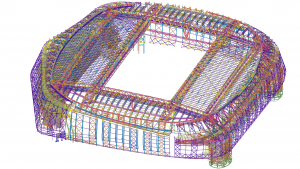
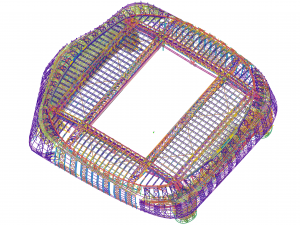
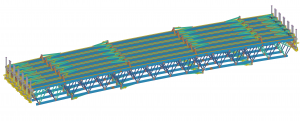
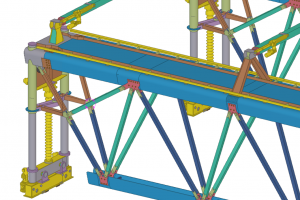

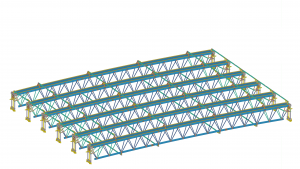

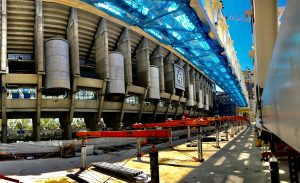





excelente trabajo de ingeniería y arquitectura
Extraordinaria obra de Arquitectura e Ingenieria, que la convierten en uno de los prodigios más importantes en su genero en el mundo…. todo un encomiable y mérecido reto en el precioso espíritu del equipo de futbol más apreciado de la historia…..
….. es un sueño convertido en realidad….
Enhorabuena todas las personas que estan haciendo esto posible….
Amazing Real Madrid and engineers